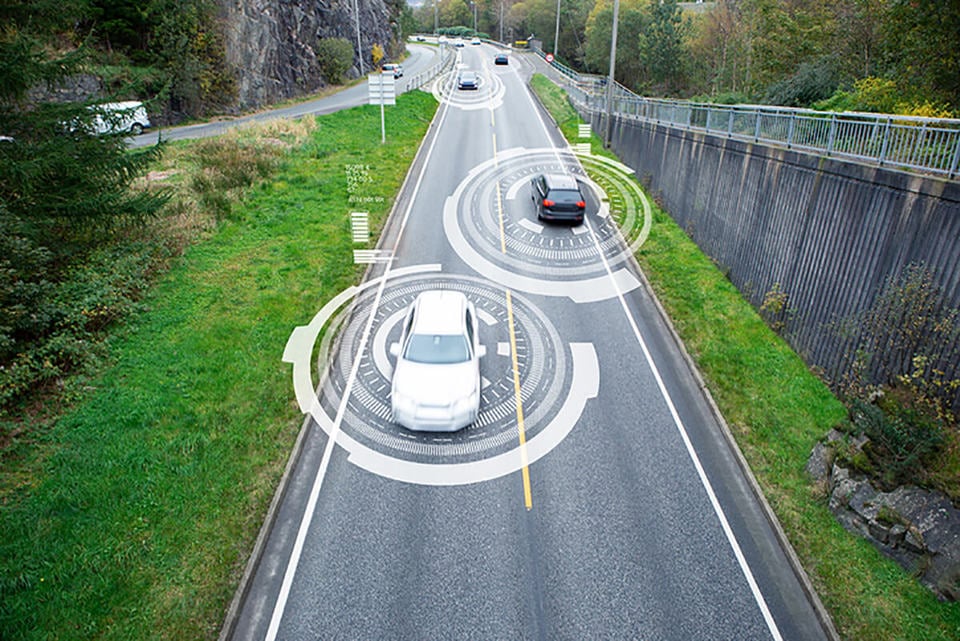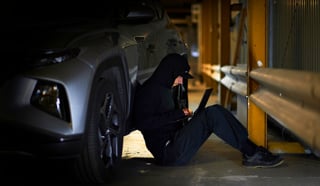The majority of the UK’s best-selling carmakers are offering AEB as an optional extra, but just one of the SMMT’s ten leading car brands by sales volume, Land Rover, offers it as standard across all model ranges.
The only other top ten carmakers to offer standard-fit AEB on more than half of their models are Toyota (53%) and Mercedes-Benz (88%), according to the latest data from Thatcham Research data.
Matthew Avery, director of research at Thatcham Research, said: “This strategy by carmakers of offering AEB as an add-on must be reviewed, as our data shows that consumer take-up of optional safety packs in the car showroom is below 3%.
“Volume carmakers should feel the greatest sense of responsibility. They sell the most popular vehicles in the UK and are the cars we are most likely to encounter on the road. A big opportunity to expose more drivers to the proven safety benefits of AEB continues to be missed.”
The two highest selling car brands in the UK, Ford and Vauxhall, have the lowest availability of standard-fit AEB across their model ranges (7% and 14% respectively). The Ford Fiesta – 2018’s top selling car to date – offers AEB only as an option on most models.
Avery said: “If you’re buying a new car, don’t bank on it having AEB. Consumers that care about safety must ask the right questions in the dealership. Starting with, does this car come with an automatic braking technology?”
In addition, premium carmakers Audi (16%) and BMW (23%) have proven that cost does not guarantee the presence of standard-fit AEB either.
“A car with a higher price tag won’t necessarily have AEB as standard. Meanwhile, some mass-market cars do have it as standard – the VW Golf, Honda Jazz and Nissan Qashqai for example – while other 2017 models in the same category do not,” continued Avery. “The inconsistent availability of AEB is muddying the waters. Following Land Rover and Volvo in making the commitment to standard-fit AEB on all new makes and models is the only solution.”
A decade of AEB
Thatcham Research has issued this call on the 10th anniversary of the launch of the 2008 Volvo XC60 – the first car on the market to have standard-fit AEB.
The 2008 Volvo XC60’s AEB system was relatively basic, operating at up to 20mph. Today’s best AEB systems can operate at a variety of speeds, in different driving environments and can now identify pedestrians, cyclists and even large animals.
AEB explained
There are more than 60 different brand-specific names given to AEB systems by carmakers – from Active City Stop to Forward Collision Plus and Radar Brake Support.
Data suggests that 2.6 million cars on the road today have standard-fit AEB. AEB systems can detect an impending crash and slow or stop the car if the driver fails to act. It uses lidar, radar, camera or a combination of these to monitor the road in front of the car.
If a vehicle in front slows suddenly the system will alert the driver and, if they fail to act, apply the brakes automatically.
Some systems only work at lower, urban speeds while others function up to motorway speeds. Real world data shows that AEB is reducing the most common crash type, the rear-end collision, by 38%.
AEB does not only prevent front-to-rear impacts. Reverse AEB can apply the brakes to avoid reversing into objects or people and other AEB systems can detect VRUs (Vulnerable Road Users) like pedestrians and cyclists.
Having standard-fit AEB on your car can reduce your insurance group rating by three to five groups (the higher the group rating – up to 50 – the greater the likelihood of a higher insurance premium).
Standard-fit AEB availability by car brand
|
Rank |
Brand |
% AEB standard-fitment across brand |
|
1. |
Ford |
7% |
|
2. |
Vauxhall |
14% |
|
3. |
Volkswagen |
46% |
|
4. |
Mercedes-Benz |
88% |
|
5. |
Nissan |
30% |
|
6. |
BMW |
23% |
|
7. |
Audi |
16% |
|
8. |
Toyota |
53% |
|
9. |
Land Rover |
100% |
|
10. |
Kia |
14% |
|
- |
Volvo |
100% |

























Winston - 07/03/2018 11:37
Well done Land Rover and Volvo for committing 100% to AEB. All manufacturers should follow suit now, and make AEB standard on all new cars. Forego the fancy alloys, or extra speakers if the cost is a factor. Getting from A to B safely is more likely with AEB.!!